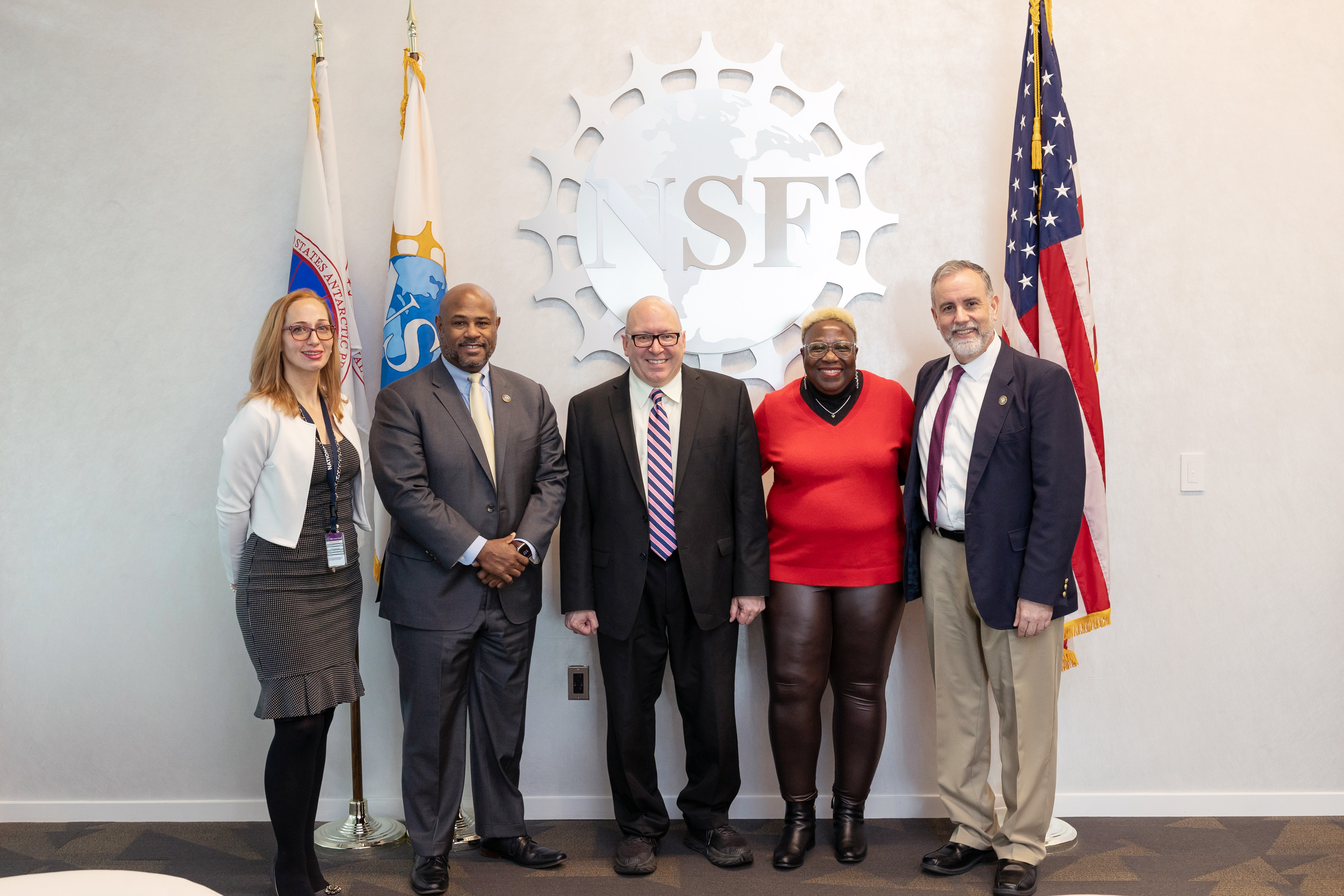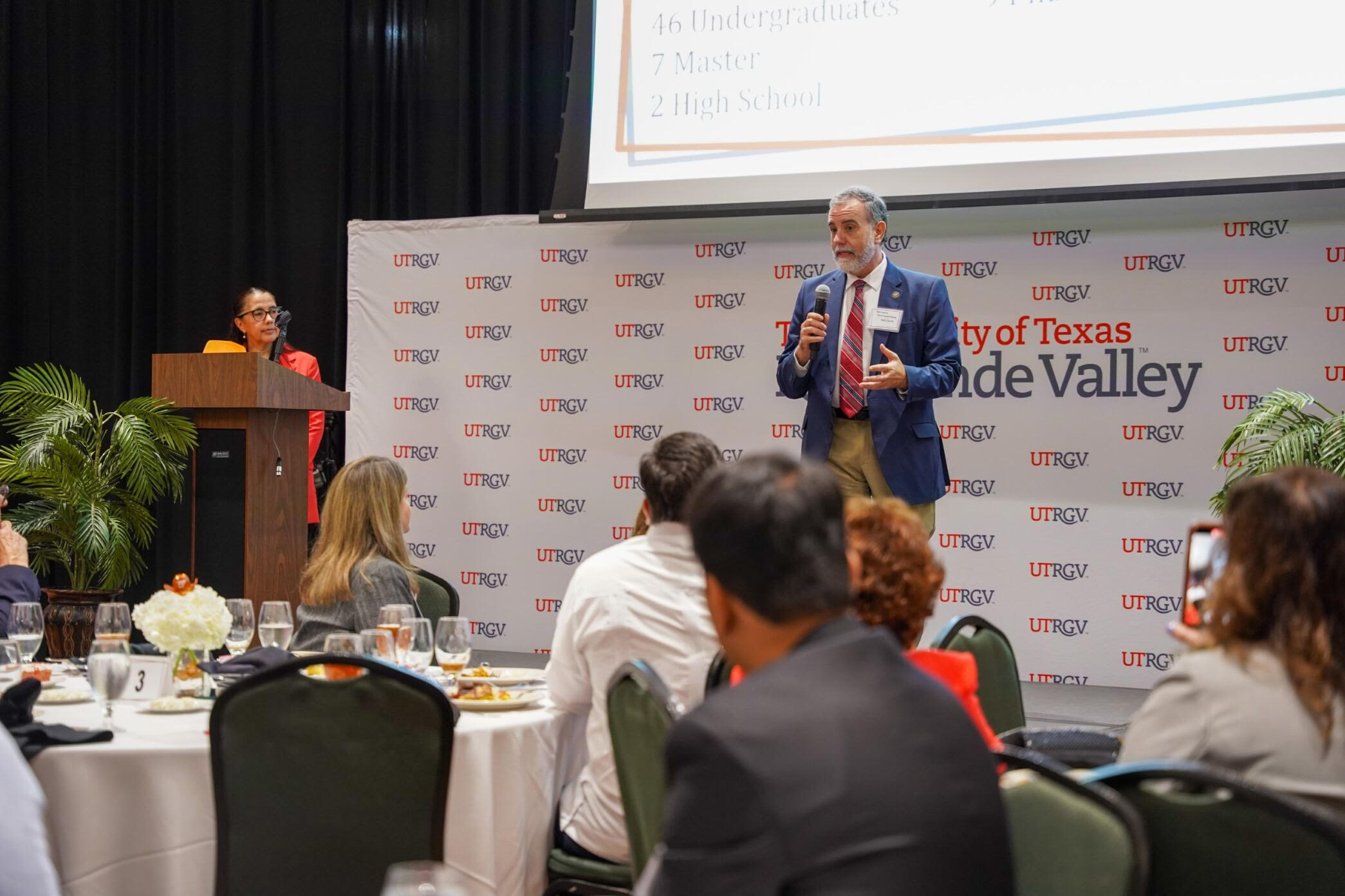 In early 2023, the National Science Foundation (NSF) appointed Germano Iannacchione as the new Division Director of its Division of Materials Research (DMR)—a division with a critical objective to invest in the discovery, development, and design of new materials.
In early 2023, the National Science Foundation (NSF) appointed Germano Iannacchione as the new Division Director of its Division of Materials Research (DMR)—a division with a critical objective to invest in the discovery, development, and design of new materials.
Materials science and engineering relies heavily on interdisciplinary research—bringing together physics, chemistry, and engineering to study the fundamental science and properties of materials and lay the groundwork for their applications in the real world.
The world, after all, is made up of materials, and materials science can help address global challenges—whether it’s to find a new material for better water filtration, or decrease the cost of photovoltaics for solar power, or create more resilient materials for infrastructure.
“Our research makes the expensive, cheap; it makes the dirty, clean; it makes the hard, easy; it makes the dangerous, safe,” says Iannacchione.
Combine this curiosity-driven and use-inspired research with the power of technology and communication in a globally interconnected society such as ours, and you get an explosion of interest, participation, and collaboration in materials science research and a subsequent emergence of exciting new discoveries.
And that’s where we are today.
“We’re taking those lessons and internalizing them at NSF,” says Iannacchione. “We’re learning lessons that good ideas can come from anywhere, and brilliance can emerge from surprising places.”
Tapping into the Power of Collaboration
Iannacchione has worked with NSF for several years—as Program Director of NSF’s Condensed Matter Physics Program from 2017-2020 and as Program Director of the Biomaterials Program from 2018-2019. From 2020 until his appointment as Division Director, he also served as an expert in DMR, advising leadership as well as working on specific initiatives for the Division. One such effort was developing the concept of a “Square Table”—different from a “round table” where experts focus on a single, clearly identified problem.
Instead, a Square Table lacks that “central question” and brings together multidisciplinary groups that don’t traditionally collaborate to tap into their fundamentally different perspectives, approaches, and expertise to explore the intellectual landscape. Over time, this collaborative effort from multiple, diverse sides brings about much-needed structure to address fundamental problems.
The first-ever Square Table, held in December 2018 brought together biomaterials and soft-condensed matter researchers with synthetic biologists. These groups then worked with regulators and funding agencies to explore how synthetically developed new materials would be regulated and funded.
In 2021, NSF’s Mathematics and Physical Sciences (MPS) Directorate collaborated with the National Cancer Institute’s Division of Cancer Biology to explore “living materials,” including engineered materials that are made up of living cells that can alter the material in some way. Given that cancer is a natural example of how structures and functions can change, even beyond an organism’s biology, learning how to replicate that assembly and structure would benefit the research and technology world. The two agencies also held Square Tables on challenges and opportunities related to new cancer research methods and technologies as well as the need to explore the theme of emergent properties in cancer from a multidisciplinary perspective.
According to Iannacchione, NSF can play a key role in these kinds of efforts. “We can initiate those very nascent, very first conversations between very different disciplines.” The agency recently wrapped up a Square Table effort with the US Air Force, US Space Force, and NASA on exploring and developing materials for space.
 A Look to the Future
A Look to the Future
In addition to serving as DMR Division Director—a term that will continue for three to four years—Iannacchione teaches physics at Worcester Polytechnic Institute (WPI) in Worcester, Massachusetts. At WPI, Iannacchione’s area of research is experimental soft condensed matter physics, specifically how polymers, liquid crystals, and biomaterials self-assemble into ordered states and their properties as they undergo phase transitions.
Iannacchione is a first-generation American; his family immigrated from Italy and settled in Akron, Ohio. After getting a PhD at Ohio’s Kent State University, Iannacchione moved to Massachusetts in 1996 for a postdoc at MIT and, shortly after, joined WPI.As professor and DMR Division Director, Iannacchione’s days are packed. “A typical day starts early in the morning with a large number of emails that somehow came into existence overnight.” There’s also constant collaboration and planning for what Iannacchione refers to as “imagining the future” to determine the best use of research, tools, and technologies in the field of materials science.
One of Iannacchione’s primary goals during his term as Division Director is to tackle global, emerging challenges such as climate change and sustainability with the speed and intensity they call for. “We can’t just wait for the natural development of some innovation that’s going to save us eventually,” he says.
On top of that, while a lot of the solutions have been identified in the lab, materials science and engineering researchers must work hard to apply them in the real world. So, while there might exist, for instance, a nascent material with powerful properties, the challenge, says Iannacchione, is “how do you shepherd that so that it actually will make an impact on a global scale?”
That is a challenge that DMR is uniquely positioned to address because of its wide reach across multiple scientific disciplines. “DMR covers a community of communities,” says Iannacchione. “When you’re at the hairy edge of the unknown, you’re at the point where you don’t even know what the unknowns are.” But, agency heads and others recognize there’s potential to collectively work toward answers. “These connections are things that all federal agencies involved in research are trying to do.”
By Divya Abhat, Science Writer/Editor; Content Strategist
